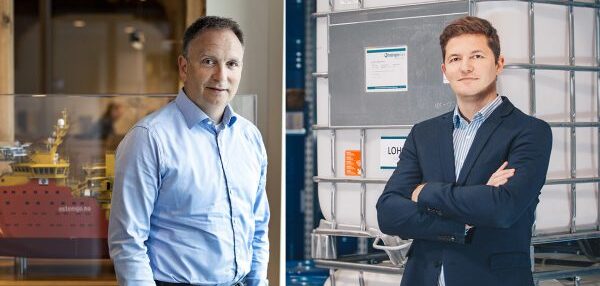German firm Hydrogenious LOHC Technologies and Swedish offshore service provider Johannes Østensjø dy have founded a joint-venture (JV) company, Hydrogenious LOHC Maritime. The JV aims to develop and market emission-free liquid organic hydrogen carrier (LOHC)-based applications for shipping and have a commercial product ready for operation from 2025.
The focus, say the parties, is on onboard LOHC/fuel cell propulsion systems on a megawatt scale, though Hydrogenious’s LOHC is also applicable to conventional bunkering facilities onboard as well as in ports. The funding agency Enova, owned by the Norwegian Ministry of Climate and Environment, is to support the joint venture’s initial project, HyNjord, with NOK 26m (US$3m). Hydrogenious LOHC Technologies will work on integrated onboard solutions including an LOHC release unit and fuel cell for heavy-duty transport.
“We’re very happy to have found the ideal partner in the Østensjø Group. The Østensjø Group, which is well established not only in Norway but also internationally, has seen LOHC as the game-changer for the decarbonization of shipping for some time,” commented Daniel Teichmann, CEO and founder of Hydrogenious LOHC Technologies and the joint venture’s chairman of the board. “The strategic planning for the new type of service operation vessel with LOHC was already a done deal at Edda Wind. Based on an exclusive worldwide license agreement, Hydrogenious LOHC Maritime will make our proprietary LOHC technology available for onboard solutions for sustainable maritime traffic, i.e. develop, final assembly and market integrate carbon-free propulsion systems and offer aftermarket and other related services.”
The LOHC technology is claimed to be a safe, easy and efficient method for storage and transportation of hydrogen, which the company hopes will revolutionize the supply chain for hydrogen. Its unique feature is that hydrogen is chemically bonded to the low-toxicity, non-explosive, low-cost carrier oil, which can be used to store and transport large quantities of hydrogen under ambient conditions, using the existing fossil fuel infrastructure. The carrier oil Hydrogenious LOHC uses – benzyltoluene – can be loaded and unloaded with hydrogen many hundreds of times and is recyclable many times over.
“The Østensjø Group is committed to taking part in the energy transition and to finding ways to cut emissions. Of all the potential zero-emission technologies, we find LOHC the most promising one. That is why we have prepared all six service operation vessels under construction in our subsidiary, Edda Wind, for LOHC-based propulsion. Safety is of course very important for us in these evaluations. However, the fact that we can use existing fuel infrastructure and are able to use familiar fueling procedures is important. In addition, we can easily carry enough energy onboard our vessels to operate in normal intervals of up to four weeks without refueling,” added Håvard Framnes, investment director at Østensjø Group and a board member of Hydrogenious LOHC Maritime.
“In Østensjø, we are very excited about this joint venture and the cooperation with Hydrogenious LOHC Technologies. We believe the technology provided by the joint venture can be suitable for most shipping segments, which makes the market potential huge for the company. We believe in the LOHC technology and are excited to be part of developing new innovative and sustainable solutions for the industry,” concluded Framnes.



